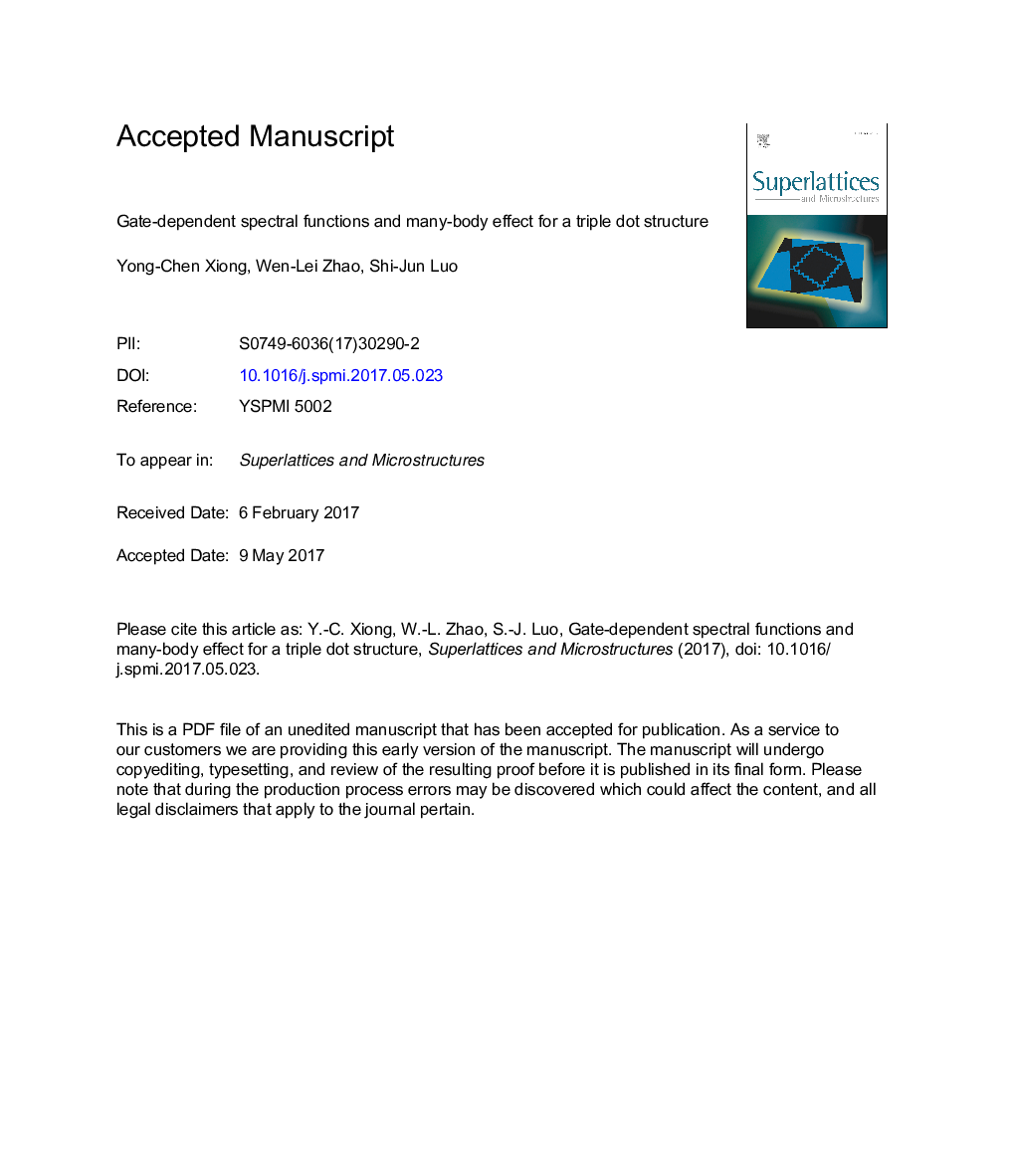| Article ID | Journal | Published Year | Pages | File Type |
|---|---|---|---|---|
| 7940308 | Superlattices and Microstructures | 2017 | 15 Pages |
Abstract
In this paper, we study the spectral functions and the phase transition for a parallel triple dot structure. When the external gate voltage sweeps, the total charge number Ntot changes from 0.0 to 6.0 in a steplike manner. We highlight the related properties beyond the regime Ntotâ¼3.0. When Ntotâ2.0, two of the dots are singly occupied, while the remaining one is empty. In this case, the possibilities of each dot being singly occupied decrease, leading to the reduction of the Ruderman-Kittel-Kasuya-Yosida interaction, hence a local spin singlet between two singly occupied dots is generated, and the linear conductance is suppressed. The inter-dot transport is responsible for this suppression, since a negative peak with considerable size develops in the out-of-diagonal spectral function. In the regime Ntotâ1.0, a large potential scattering peak is found around the Fermi energy in the transmission coefficient, relates to the process of adding an additional electron on the dots, instead of the Kondo effect. Since the dots are in the strong correlation limit, the many-body effect may be significantly important, thus we try to understand above behaviors by considering the many-body state configurations. To approach theses problems, the numerical renormalization group method is implemented, and the charge number and spectral properties of the bonding and antibonding orbits are shown.
Related Topics
Physical Sciences and Engineering
Materials Science
Electronic, Optical and Magnetic Materials
Authors
Yong-Chen Xiong, Wen-Lei Zhao, Shi-Jun Luo,
